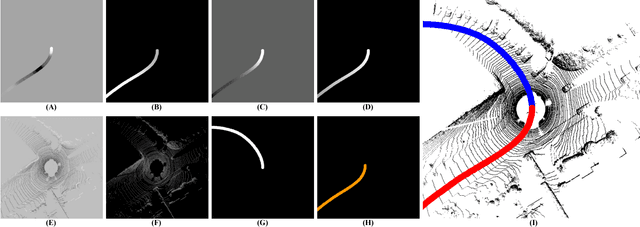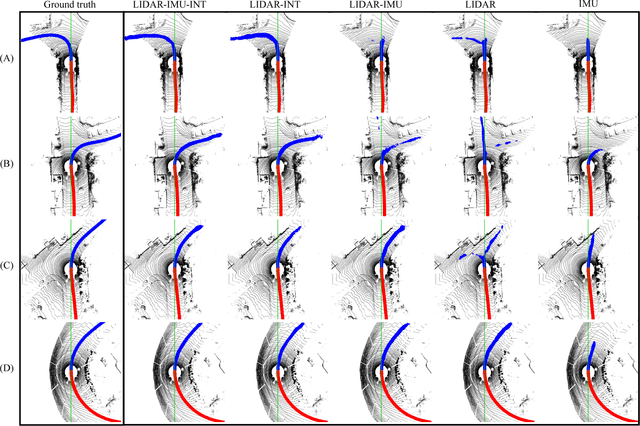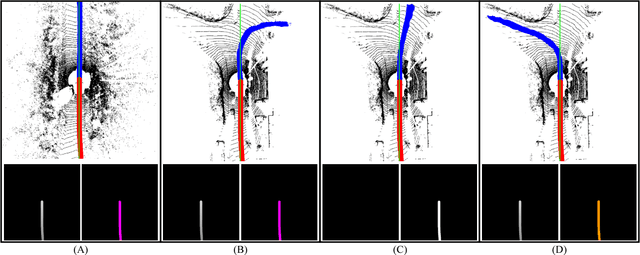LIDAR-based Driving Path Generation Using Fully Convolutional Neural Networks
Paper and Code
Apr 03, 2017



In this work, a novel learning-based approach has been developed to generate driving paths by integrating LIDAR point clouds, GPS-IMU information, and Google driving directions. The system is based on a fully convolutional neural network that jointly learns to carry out perception and path generation from real-world driving sequences and that is trained using automatically generated training examples. Several combinations of input data were tested in order to assess the performance gain provided by specific information modalities. The fully convolutional neural network trained using all the available sensors together with driving directions achieved the best MaxF score of 88.13% when considering a region of interest of 60x60 meters. By considering a smaller region of interest, the agreement between predicted paths and ground-truth increased to 92.60%. The positive results obtained in this work indicate that the proposed system may help fill the gap between low-level scene parsing and behavior-reflex approaches by generating outputs that are close to vehicle control and at the same time human-interpretable.
 Add to Chrome
Add to Chrome Add to Firefox
Add to Firefox Add to Edge
Add to Edge